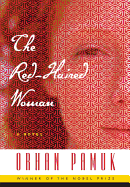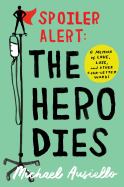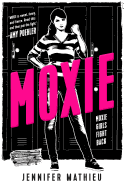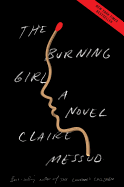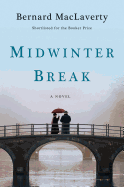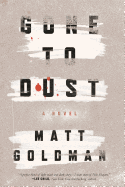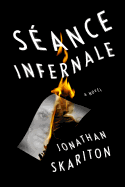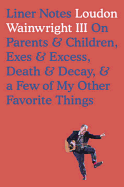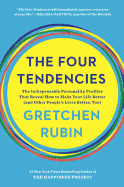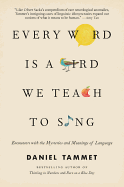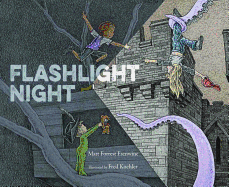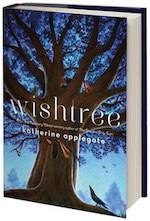Tuesday, September 26, 2017
The question pops up often, in variations on this theme: "Which three writers, dead or alive, would you invite to a literary dinner party?" My answer has long been the same: Ralph Waldo Emerson, Margaret Fuller and Henry David Thoreau at Emerson's house in Concord, Mass.
I'd never get a word in edgewise. That would be fine.
 I thought about this recently after reading Henry David Thoreau: A Life by Laura Dassow Walls, a fine exploration of Thoreau the writer. As sometimes happens with biographies, I opened the book thinking I already knew a lot about the subject. Five hundred pages later, I emerged humbled once again by revelations about and astute interpretations of Thoreau's singular life.
I thought about this recently after reading Henry David Thoreau: A Life by Laura Dassow Walls, a fine exploration of Thoreau the writer. As sometimes happens with biographies, I opened the book thinking I already knew a lot about the subject. Five hundred pages later, I emerged humbled once again by revelations about and astute interpretations of Thoreau's singular life.
On a shelf near my desk is a ragged Modern Library edition of Walden that I purchased in the late 1960s. It represents my introduction to the Concord gang. "Everyone who comes to Thoreau has a story," Walls writes in her introduction. "Mine begins in a neighborhood bookstore where I pulled a book off the shelf simply because it was small and green--like the little green book I'd been carrying around (filched from my father's library) by a writer named Ralph Waldo Emerson."
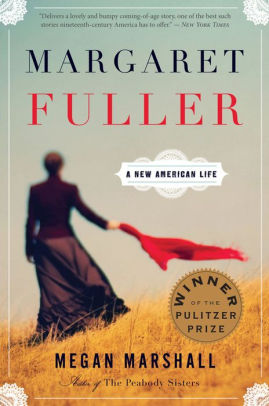 Walls reminded me that all assumptions about 19th-century Concord are, and always will be, subject to revision. I experienced a similar jolt in the 1990s while reading Robert Richardson's dazzling book Emerson: The Mind on Fire and again a few years ago with Megan Marshall's excellent Margaret Fuller: A New American Life. Minds on fire indeed.
Walls reminded me that all assumptions about 19th-century Concord are, and always will be, subject to revision. I experienced a similar jolt in the 1990s while reading Robert Richardson's dazzling book Emerson: The Mind on Fire and again a few years ago with Megan Marshall's excellent Margaret Fuller: A New American Life. Minds on fire indeed.
Early in her new book, Walls recounts a moment when Fuller, as editor of Dial, rejects an essay by the young Thoreau: "The challenge she offered was tremendous: no models existed for what Thoreau was attempting. He was on his own, bearing the potential for greatness but also the knowledge that getting to that greatness meant a leap to originality--a leap he didn't know how to make." I'd love to talk about that over dinner. --Robert Gray, contributing editor
The Red-Haired Woman
by Orhan Pamuk, transl. by Ekin Oklap
Orhan Pamuk (My Name Is Red), who won the Nobel Prize for Literature in 2006, writes of his native Turkey in The Red-Haired Woman. At first, the story is narrated by a young boy named Cem, whose father, a leftist dissident, is taken to prison. Desperate for money, Cem finds a job as an apprentice for a renowned well digger, Master Mahmut, in the small town of Öngören. The two work together on a barren plateau to find water for a client. They become like father and son, and at night they visit the town for supplies and leisure. That's where Cem meets the alluring "red-haired woman," who is part of a traveling theater troupe. As he falls in love, his obedience to his master and the well wavers, precipitating a tragic accident that follows him into adulthood and shapes his destiny.
Pamuk writes with the lean, archaic simplicity of parable, gradually adding moral weight to his tale with each successive chapter. Cem and Mahmut's search for water takes on mythical qualities. In the red-haired woman's narrative section, she comments on the prevalence of Oedipal struggle: "Whether it was fathers killing their sons, or sons killing the fathers, men always emerged victorious, and all that was left for me to do was weep... the logic of the universe turns on the tears of mothers."
The Red-Haired Woman is a novel of uncommon moral power. It blends myth and life, fatalism and freedom, into a harrowing literary experience. It's the work of a master writer. --Scott Neuffer, writer, poet, editor of trampset
Discover: In this novel from Turkish author and Nobel laureate Orhan Pamuk, a young apprentice must contend with the forces of love and fate.
The Burning Girl
by Claire Messud
Celebrated American novelist Claire Messud (The Emperor's Children) turns her keen eye to coming-of-age in The Burning Girl, a story of two young women torn apart by the simple act of growing up. While the plot is age old, Messud shows how even well-trod roads may still reveal undiscovered gems.
The Burning Girl is narrated by Julia, a high school senior with a comfortable life in a small Massachusetts town and a bright future ahead of her. Since she was very young, she's been best friends with Cassie, a spirited girl living with her single mother. As puberty hits, Cassie becomes more outgoing and seeks new, dangerous friends; meanwhile, her mother, Bev, begins a romance with a controlling doctor who may or may not have designs toward Cassie. As Julia and Cassie's relationship deteriorates, Cassie's behavior becomes increasingly alarming, until her estranged friend is called on to pull her back from the brink.
The "may or may not" about the doctor's intentions is important for how The Burning Girl reads. Julia is aware of most of what happens to Cassie, but must speculate here and there, building up from what she knows about her former friend and what she hears from others (she often relays information to the reader that is second- or third-hand). Sometimes Julia admits her limits to understanding Cassie, but still speaks with certainty even when it's clearly just her own projection. That bit of unreliability allows Messud some breathing room inside the standard coming-of-age plot. Julia knows how these stories are supposed to work, and maybe--just maybe--she's fitting what has happened into that structure. --Noah Cruickshank, adult engagement manager, the Field Museum, Chicago, Ill.
Discover: Claire Messud's The Burning Girl uses a coming-of-age tale to examine how easy it is to project narratives onto the lives of others.
Midwinter Break
by Bernard MacLaverty
In Bernard MacLaverty's Midwinter Break, Stella and Gerry are a married couple from Glasgow on an Amsterdam holiday in the dead of winter. They've been together 40 years. Gerry is a retired architect who drinks too much. Stella is a retired teacher who does crossword puzzles to stave off a family history of dementia: "What would it be like.... To have slalomed all obstacles only to arrive at a white-out. Then a black-out. Then nothing." Although entangled by years of conjugal idiosyncrasies, clever badinage and the humdrum messiness of married life, they are drifting towards a separation. Gerry observes: "When one strong magnet is aimed at another they refuse, they skid off each other." Stella is less metaphorical as she tells him: "The family is raised--the work's done.... I want to do something with the time I've left. Other than watch you drink."
Booker shortlisted Bernard MacLaverty (Grace Notes) perfectly captures the subtle nuances and habits of the long married. Gerry and Stella know where each sets their reading glasses. He always takes her elbow when crossing busy streets. They habitually brush a kiss when in an empty elevator. Gerry solicitously rides the escalator on her downside lest she fall. Midwinter Break is a remarkable literary achievement. It's an adult novel about an aging couple facing their last years--either together or apart. If together, it will be mostly up to the practical Stella to make it happen, because "she knew about love--how to make it and how to mend it." --Bruce Jacobs, founding partner, Watermark Books & Cafe, Wichita, Kan.
Discover: With a sharp eye and ear for the idiosyncrasies of marriage, Booker short-listed Bernard MacLaverty tells the moving story of an older couple assessing whether to remain a couple.
Mystery & Thriller
Gone to Dust
by Matt Goldman
TV writer and playwright Matt Goldman's first novel, Gone to Dust, begins with an eerie crime scene. A woman in Edina, Minn.--a Minneapolis suburb--has been murdered in her bed, and the killer has shrouded her body and entire house in dust from many emptied vacuum cleaner bags. How will the police collect any useful DNA evidence?
Detective Anders "Ellie" Ellegaard asks private investigator Nils "Shap" Shapiro to help with the case. Besides the usual suspects--the victim's former husband and current lover--Shap uncovers surprising relationships the woman, Maggie Somerville, had with people who might've had reason to kill her. But then the FBI tells Shap to back off: the case has much bigger ramifications than he realizes. The directive makes Shap more determined to unmask the killer, and he discovers the feds were wrong--the situation is even deadlier than they say it is.
Though Shap doesn't differ much from fictional PIs who precede him--smarter than cops, ever ready with a quip, unlucky in love, etc.--he's a likable protagonist. He treats friends and witnesses with compassion, and his longing for his ex-wife shows his romantic side. Sharp-eyed readers will spot not-so-subtle clues, and the ending falls into the trap of having long speeches to explain how and why the murder was committed, but because of its heart and humor, Gone to Dust is a promising start to a new series. --Elyse Dinh-McCrillis, blogger at Pop Culture Nerd
Discover: A private eye searches for the killer of a woman whose body and house have been covered in dust.
Good Me Bad Me
by Ali Land
At one point in Ali Land's debut novel, Good Me Bad Me, the narrator, Milly, says her insides look different from everyone else's--"A curious, twisted shape. The shape you made me. The shape I'm learning to live with." The off-stage voice of "you" that twisted and shaped Milly is that of her mother, a serial killer of children.
Milly turned her mother in after the ninth murder--a boy Milly knew. Now she is in foster care with Mike, a psychologist and expert in trauma, and his wife, Saskia, an anorexic alcoholic and pill-popper. Their teenage daughter, Phoebe, Milly soon discovers, is also an expert in trauma, although "more in the causing than the healing." With Mike's help, Milly has a chance to heal, but her mother's voice is in her head.
At school, Milly is an outsider. She speaks "like a robot" and hides her hands because they sometimes shake from permanent damage to her nervous system. When Phoebe and her cohorts push and slap her, Milly thinks, "See me, feel me, but know that I come from a place where this is merely a warm-up.... And I never forget." Milly has a compromised ability to read emotions, but she has no trouble understanding Phoebe and her friends.
With savageries only hinted at, Ali Land coolly ratchets up tension and takes the reader into a damaged mind, exploring the question of nature versus nurture, and the possibility of redemption. Good Me Bad Me is a heartbreaking, breathtaking chill of a book. --Marilyn Dahl
Discover: The teenage daughter of a serial killer mother is both her victim and a witness against her in a harrowing novel of deception and torment.
Séance Infernale
by Jonathan Skariton
Alex Whitman is haunted by his daughter Ellie's kidnapping and presumed death by a serial killer in Scotland. Since Ellie's disappearance, Whitman dulls his pain by immersing himself in the world of vintage movie memorabilia: "the loss set him on a course for his next find, whatever that might be, wherever it may take him." His obsessions collide in Séance Infernale, Jonathan Skariton's debut thriller.
Whitman, living in Los Angeles, travels to his native Edinburgh for the first time since Ellie's disappearance to acquire the earliest moving picture, "Séance Infernale." There he is stunned to learn that Ellie's abductor may be kidnapping again. In alternating voices the characters come into focus. The serial killer reveals his accelerating madness. Edinburgh Detective Georgina McBride is working against the clock, and outside department regulations, to find the killer before he chooses another child. Whitman, whose nightmares of Ellie have increased as he unravels the film's mystery, makes an alliance with McBride as she moves closer to uncovering the killer.
"Two objects can't interact without leaving traces on each other," says one detective, and indeed the slightest convergence of events are often more than they seem. As the alternating points of view let readers know what is happening outside Whitman's reality, he is still unaware, and the omniscient knowledge creates an emotional investment in the characters and a feeling of urgency as the killer moves closer to his target. When Whitman finally discovers the film's horrible secret, it leads him to the answers that bring down a monster. --Cindy Pauldine, bookseller, the river's end bookstore, Oswego, N.Y.
Discover: Séance Infernale is a noir thriller that brings together rare movie memorabilia collectors and a serial killer.
Biography & Memoir
Spoiler Alert: The Hero Dies
by Michael Ausiello
Few memoirs balance dark, snarky humor with devastating, heart-wrenching candor as well as Michael Ausiello's Spoiler Alert: The Hero Dies. This loving but clear-eyed chronicle of his 14-year relationship with his husband, Kit, centers on their final year together after Kit is diagnosed with a rare, aggressive neuroendocrine cancer.
On the day the couple wed at City Hall, they get the shattering news that Kit's cancer is Stage 4 and his life expectancy is about a year. "Was this what an out-of-body experience was like?" writes Ausiello. "Because I suddenly felt as if I were looking down on someone else's apocalypse." Kit's chemotherapy starts three days later. Soon the duo is coping with the new realities of living with a terminal illness and navigating conflicting medical opinions, medical mishaps, surgeries, pain management, remissions and slow decline. Woven between the memoir's main thread--the duo's epic cancer battle--are flashbacks to the couple's courtship, vacations, struggles, infidelities, therapy and unshakable devotion. The chapter detailing Kit's final days packs such an emotional punch because Ausiello has made readers fall in love with Kit, their relationship and their extended family and friends.
Ausiello, founder and editor-in-chief of TVLine.com, has written a remarkable, perceptive, poignant and openhearted memoir about the fragility of relationships and health--and the hidden strength people find during hard times. Spoiler Alert: The Hero Dies is a haunting and profoundly sad story, but it's brightened by witty writing, comedic interludes and the two charismatic, endearing and appealing heroes at the book's center. --Kevin Howell, independent reviewer and marketing consultant
Discover: Michael Ausiello's heartfelt, haunting and remarkable memoir recalls his husband's year-long battle with cancer and their 14 years together.
Liner Notes: On Parents & Children, Exes & Excess, Death & Decay & a Few of My Other Favorite Things
by Loudon Wainwright III
Maybe all memoir-writing musicians who survived the '60s eventually find the wisdom and perspective that comes with age. Even the recent memoirs by hard-living hard-rockers like Keith Richards, Chrissie Hynde and Billy Kreutzmann depict them as mellow in their old age. Loudon Wainwright III is no exception, but his Liner Notes refreshingly focuses on the writer side of his singer-songwriter persona and career. Wainwright chooses excerpts from his autobiographical songs, old family photos, newspaper clippings and even examples of his celebrated father's Life magazine columns. As a result, his memoir is the self-effacing chronicle of a privileged kid with a taste for drugs, booze, women and the stage--a man who seldom tried to be anything more or less than he was.
Although Wainwright was heralded by critics after his first album in 1970 as "the new Bob Dylan," the public was not equally impressed. His early records were commercial failures until the unlikely novelty tune "Dead Skunk in the Middle of the Road" hit the top 20 on 1973's Billboard Top 100. He accepts this somewhat embarrassing fame--resigned that "the skunk thing, I fear, will be the lead item in my obit... [but] better a song about roadkill than one about getting high on a mountain in Colorado."
Wainwright may be a melancholic guy ("I've had the blues for about sixty years now"), but Liner Notes is mostly lighthearted musings at the ups and downs of his life in music (26 albums so far), TV (Mash, SNL) and movies (The 40-Year-Old Virgin, Knocked Up). It is the story of a raconteur with a knack for taking it all in and putting it back into song--or into this dandy self-portrait of a life well lived. --Bruce Jacobs, founding partner, Watermark Books & Cafe, Wichita, Kan.
Discover: Loudon Wainwright III's memoir is a grab bag of personal ephemera that tells the entertaining story of a talented man and a tumultuous era.
Psychology & Self-Help
The Four Tendencies: The Indispensable Personality Profiles That Reveal How to Make Your Life Better (and Other People's Lives Better, Too)
by Gretchen Rubin
Gretchen Rubin (The Happiness Project, Better Than Before) has spent many years analyzing happiness and personality in her writing and on her podcast. In The Four Tendencies, Rubin expounds on her theory of personalities, and the four major groups that people fall into. These she calls Tendencies: Upholder (meets outer expectations and inner expectations), Obliger (meets outer expectations, resists inner), Questioner (meets inner, resists outer) and Rebel (resists both). She then explains how people respond to the pressure and demands that life puts on everyone.
For some people, making a checklist and following through is no problem. Others need accountability partners to make them take action, and still others resist all influence. Rubin explores each of the Tendencies, offering helpful tips on how to understand Questioners or deal with a Rebel spouse, and suggesting good careers for Upholders and Obligers. For each personality type, she analyzes strengths and weaknesses, and breaks down how most successfully to influence each type in personal relationships, in business settings and in terms of health care and parenting.
Readers might nod with recognition as Rubin explains why that stubborn patient refuses the best treatment, or how to convince an uptight spouse that maybe the rules aren't so important all the time. A quick read that nevertheless resonates deeply, The Four Tendencies is sure to be helpful for a variety of people--health-care providers, employers, parents, spouses and friends--who want to improve their social interactions and understand the people around them better. --Jessica Howard, bookseller at Bookmans
Discover: Gretchen Rubin outlines four general categories of personalities and how best to relate to each.
Reference & Writing
Every Word Is a Bird We Teach to Sing: Encounters with the Mysteries and Meanings of Language
by Daniel Tammet
Daniel Tammet's brain processes words a bit differently from many people's: he's a high-functioning autistic with a slight tendency toward synesthesia. A polymath writer, he is brilliant, bilingual and deeply in love with language. Tammet (Thinking in Numbers; Born on a Blue Day) takes a deep dive into the world of language with his fourth book of nonfiction, Every Word Is a Bird We Teach to Sing.
He begins with his own story of acquiring language: the colors and textures he associated with certain words as he tried them out during his London childhood. He then shares the joyous story of the year he spent teaching English to a group of Lithuanian women. With a combination of dictionaries, drawing exercises and the women's eagerness to try new things, Tammet taught--and learned--more than he'd ever expected.
The subsequent essays in Every Word are like thoughtful, extended dictionary entries on obscure words and languages: Esperanto, the disappearing dialect of Manx (spoken on the Isle of Man), the wordplay of lipograms, the linguistic rules and restrictions of American Sign Language and "telephone grammar." Throughout, Tammet's voice--witty, thoughtful and erudite--pulls readers along. His enthusiasm for language makes such niche topics as Icelandic baby names and the intricacies of L'Academie Francaise fascinating and accessible.
Instantly appealing to Tammet's fellow "word nerds," but suited for a much wider audience, these essays--like the titular bird--both soar and sing. --Katie Noah Gibson, blogger at Cakes, Tea and Dreams
Discover: Polymath Daniel Tammet takes a deep, witty, wide-ranging dive into the world of language.
Children's & Young Adult
Moxie
by Jennifer Mathieu
Vivian's mother was a high school student in the 1990s. A determined Riot Grrrl, she stuck out and acted out in her high school football-obsessed Texas town. A junior at the same school her mother attended, Viv's high school experience is very similar to that of her mother's. But Viv, unlike her mother, generally keeps her head down and avoids making waves.
Then, football star and all-around jerk Mitchell Wilson starts picking on the new girl: Lucy is mid-answer in English class when Mitchell "coughs": " 'Make me a sandwich.' " That particular instance is not enough to get Viv to act, but it opens her eyes a little wider. The T-shirts ("Great legs--when do they open?"), dress code checks only for female students, "bump 'n' grabs" and the annual March Madness bracket to decide "East Rockport's Most F*ckable" female push Viv over the edge.
Getting the idea from her mother's Riot Grrrl days, Viv creates Moxie, a feminist zine, and passes it out anonymously. As the egregious acts of misogyny continue, the girls in the school begin to band together and Moxie becomes a movement.
Mathieu's girl revolution reads true. Viv stumbles into her feminism, wary of the "f" word and held down by societal pressures to be good. The steps taken by the young women of East Rockport are hesitant and sometimes confused as they work within their established social structures, no one wanting to be singled out, no one wanting to get in trouble. And through this organic process of finding and bonding with other young women, Viv also begins to see her whiteness and how it oppresses. Moxie is a work of solidarity, a call for change and a righteously enjoyable story of grrrl power. --Siân Gaetano, children's and YA editor, Shelf Awareness
Discover: Sick of the rampant misogyny in her school, Viv creates a 1990s-inspired zine and starts a mini Riot Grrrl revolution.
Flashlight Night
by Matt Forrest Esenwine, illus. by Fred Koehler
"FLASHLIGHT.../ ...opens up the night./ Leads you past old post and rail/ along a long-forgotten trail." The "you" to whom the omniscient narrator refers is three adventuresome kids--one clutching a flashlight, another a teddy bear--who climb down from a tree house to explore the night. They find a forgotten trail that goes "into woods no others dare,/ for fear of what is waiting there."
Actually, the kids never leave the backyard. True, in Fred Koehler's broody dark-pencil art, digitally tinted with colors that look cloaked by night, the flashlight's glow illuminates fantastical scenes: a forest where a tiger lurks, a staircase leading to an ancient tomb and so on. But Koehler uses a darker palette to show the spots that the flashlight misses--the real world that the kids occupy as they indulge their imaginations. While the flashlight may reveal a pirate ship at sea, keen-eyed readers will notice that the light misses a backyard swimming pool whose water, in the minds of these fantasy-chasing kids, becomes the ocean.
Poet Matt Forrest Esenwine's first book favorably recalls Where the Wild Things Are, which put the imagination-sparking power of nighttime, with its blank slate-like quality, on the picture book map. But unlike Sendak, Esenwine gives parents the last word. At Flashlight Night's end, the kids, having had a close call with an octopus, return to the safety of the tree house, where they read by flashlight until they hear a gentle admonishment that has the nimblest double meaning: "Shhh.../ ...lights out." --Nell Beram, freelance writer and YA author
Discover: All it takes is a dark night, a flashlight and three kids with imagination to make a wondrously wild rumpus.
Wishtree
by Katherine Applegate
Red is a gregarious, 216-ring-old northern red oak. "Maybe we've met? Oak tree near the elementary school? Big, but not too? Sweet shade in the summer, fine color in the fall?" Although most trees are "not big on chitchat," Red has a story to tell--in addition to his given name, Red is also known as a "wishtree." The original wishtree story is rooted in 1848, when a newly emigrated Irish girl introduced to Red her homeland's custom of tying a wish on a tree. But the "branches" of the story take place in present-day America. Every year, on May first, people come from all over the town to tie scraps of fabric and paper with their hopes and longings to Red's branches: "I wish my gerbil could talk." "I wish for a world without war." "I wish my dad could get better."
Generations of families have lived in the two little houses beneath Red's boughs. "Babies and teenagers, grandparents and great-grandparents. They spoke Chinese and Spanish, Yoruba and English and French Creole. They ate tamales and pani puri, dim sum and fufu and grilled cheese sandwiches.... That's our neighborhood: wild and tangled and colorful." But when a 10-year-old girl named Samar and her Muslim family move in, something is different. People are not as warm and welcoming as they've been with other families from "faraway." Someone throws raw eggs at the house, and children taunt Samar as she walks down the street. But it's not until a teenager carves the word "LEAVE" in Red's trunk that the community--including Red and his animal residents--is stirred to action.
Unfortunately, one of the ripple effects of the commotion is that Francesca, the owner of the land where Red is rooted, starts thinking about cutting him down: "[That tree has] been nothing but trouble for as long as I can remember.... Wishtree or not, this oak is destroying the walkways. Messing with the plumbing, too. Roots go on forever."
As much as he doesn't want to be chopped down, Red is more worried about the animals he shelters and about Samar if he is indeed going to be cut down. He and his best buddy, a crow named Bongo, begin to scheme about helping Samar make a connection to the community, with poignant results.
In Wishtree, Katherine Applegate, beloved author of Newbery-winning The One and Only Ivan (as well as a version for younger kids, Ivan: The Remarkable True Story of the Shopping Mall Gorilla), Crenshaw and the Animorphs series, presents an unusual protagonist in children's literature. Red is funny and wise, in spite of Bongo's eye-rolling entreaties for him to cut the punnish "tree humor" and the "Wise Old Tree routine" when Red gets too platitudinous with his philosophizing. His life has been good, no question about it. Still, he says, "I wanted to make a difference, just a little difference, before I left this lovely world." Having such brutal evidence of the hate that exists in their own town carved into his bark spurs Red on. But, as he says, "What could I possibly do? I had limbs, but they could merely sway. I had a trunk, but it was rooted to the earth. I had a voice, but it could not be used." Even so, Red and Bongo manage to set lasting change in motion through the small steps they can make, and ultimately it's the children--animal and human--that make the wishes of many come true.
The life of a tree is beautifully portrayed throughout Wishtree: "Leaves have cooled picnickers and proposers. Beneath my boughs vows have been made, hearts mended. Nappers have napped; dreamers have dreamed. I've watched ascents attempted, listened to stories spun." It hasn't all been picnics and sweet dreams, though. Red has "aches and pains, like everyone. Last year I had a mite infestation that drove me nuts. Leaf blister, sooty mold, oak wilt, leaf scorch: Been there, done that."
Every one of Applegate's characters is remarkably developed and authentic. Dialogue, especially between Red and Bongo, is as playful and witty and comfortable as one would expect from best friends. On Red's 216th birthday, the two chat:
"Another sproutday," I said. "I still feel like a sapling."
"You don't look a day over a hundred and fifty," Bongo replied. "Best-looking tree on the block."
"I'm really"--I paused for comic effect--"getting up there."
Bongo, who was perched on my lowest branch, sighed. A crow sigh is unmistakable, like a groan from a tiny, cranky old man.
"Tree humor," I explained, just in case Bongo had missed it, although of course she hadn't. Bongo misses nothing. "Because, you know, I'm so tall."
"Really, Red?" Bongo stretched, admiring her lustrous blue-black wings. "That's the best you got for me this morning?"
Readers will adore Red and his friends, laughing out loud at Bongo's pleas to make "deposits" on the heads of certain deserving individuals and at the naming conventions of animals (skunks name themselves after pleasant scents, like FreshBakedBread; barn owls have "sensible, no-fuss names," like Harold; "notoriously forgetful" raccoon mothers skip the traditional monikers, instead going with names like You, You, You and You). The lasting message of Wishtree, though, is one of acceptance. After all, as Red says, "Making others feel safe is a fine way to spend your days." --Emilie Coulter
| Advertisement Meet belle bear! |


